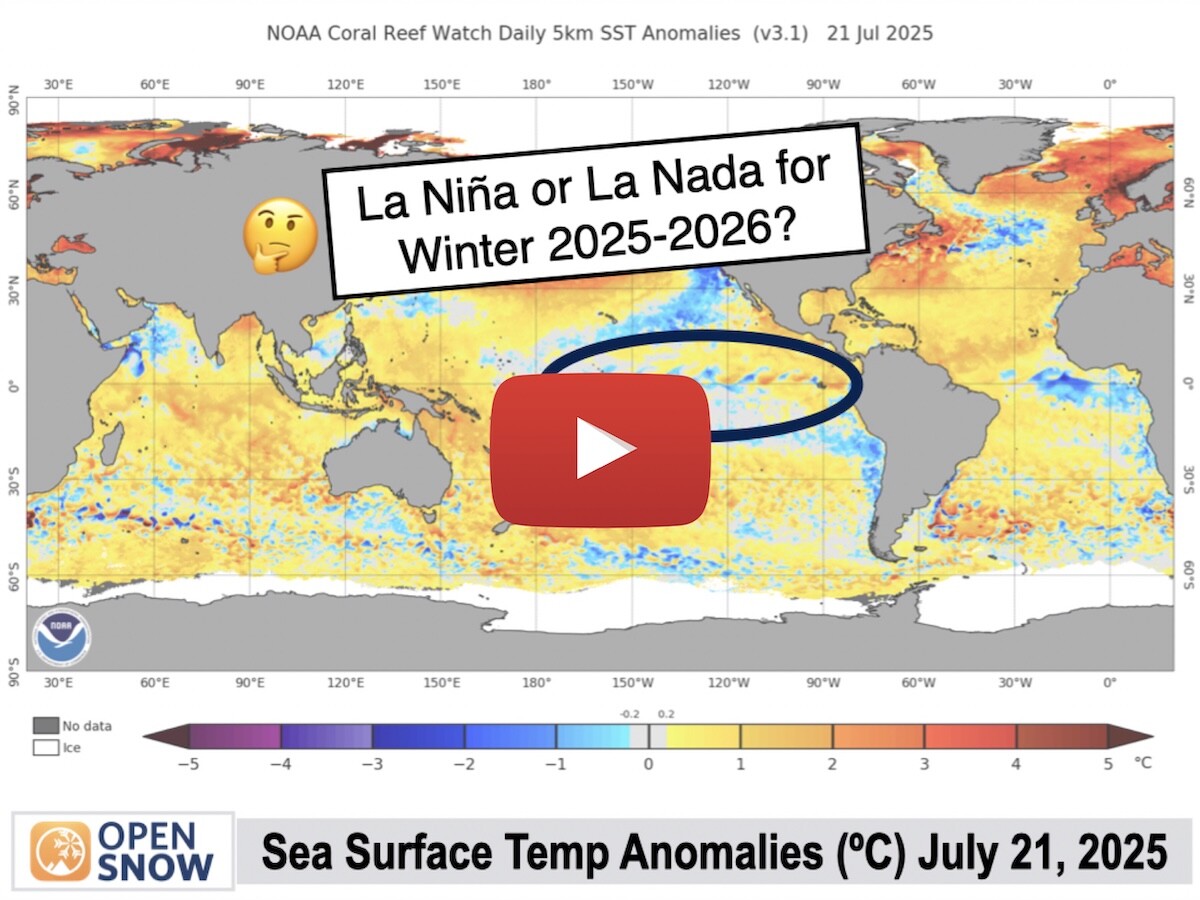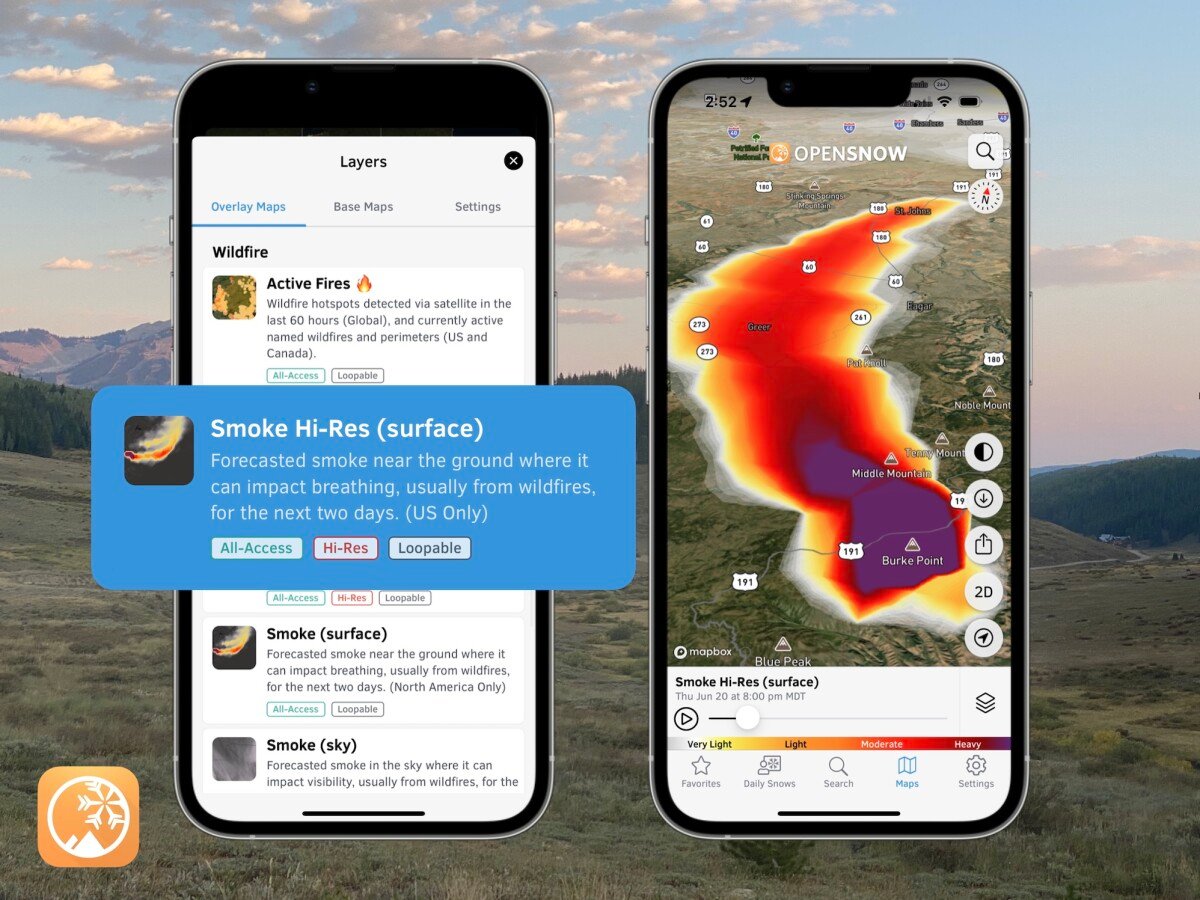Western US Daily Snow

By Alan Smith, Meteorologist Posted 23 days ago July 3, 2025
Fourth of July Weekend Forecast
Summary
A low pressure trough will move across the Northern Rockies on Friday & Saturday and abundant monsoonal moisture in place will result in numerous showers & t-storms with heavy rain possible. Scattered t-storms can be expected both days across the Central Rockies, including UT & CO. Early next week, the monsoon will weaken a bit with more run-of-the-mill t-storms & lighter rain for most areas.
Short Term Forecast
Helpful Links:
5-Day Temperature Outlook:
The holiday weekend will start off with milder temperatures in many areas thanks to an uptick in moisture and cloud cover. However, temperatures will heat up again by early next week, especially over the Northwest, where 5-day temperature anomalies will be well above normal.

Friday (July 4):
On the Fourth of July, a potent trough will move across the Northern Rockies and will tap into monsoonal moisture to result in an active day with numerous showers and thunderstorms.
Showers and storms will be possible at all hours of the day across this region, with stronger storms and training of storms capable of producing heavy rainfall amounts. Isolated flash flooding also couldn't be ruled out.

Further south, thunderstorm coverage will be more scattered in nature and primarily confined to the midday to afternoon hours across Utah and Colorado, but stronger storms will produce moderate to locally heavy rainfall.
In Colorado, the San Juans are less likely to see thunderstorms compared to the rest of the state, which is not typical during monsoon season.
Northern Arizona and New Mexico will also see a significant drying trend with little to no thunderstorm activity, while isolated thunderstorms with light to moderate rain are possible across Southern Arizona.

Saturday (July 5):
The Northern Rockies will remain under the influence of the trough with more showers and thunderstorms expected, some of which will produce heavy rain. The focus will shift eastward a bit with Montana and Northern Wyoming favored for the most widespread activity.
The Sawtooths and Central Idaho will see more of a morning and early afternoon threat with a possible later-day drying trend.

Isolated to scattered afternoon thunderstorms can be expected further south across the Central and Southern Rockies, with most storms producing light to moderate rain.

Sunday (July 6):
Monsoon moisture will decrease across most of the West in the wake of the Friday-Saturday trough.
However, low-level moisture originating from the Gulf of Mexico will creep westward toward New Mexico, resulting in an uptick in thunderstorms across eastern ranges such as the Sangres and Sacramentos as well as the adjacent plains.
Stronger storms will be capable of heavy rainfall in this region, and isolated flash flooding is also possible, especially in burn scars and dry washes.

Limited moisture and daytime heating will allow isolated to scattered thunderstorms to develop elsewhere across the Southern and Central Rockies. Most of these storms will produce light rain and gusty winds, though some localized downpours are possible in Colorado.

Monday (July 7):
A low-grade monsoon pattern will re-emerge with the highest moisture levels over New Mexico and Eastern Arizona, where thunderstorms will be capable of producing heavy rain.
Further north across Northern Arizona, Utah, and Colorado, scattered thunderstorms will develop and will generally produce light to moderate rain with less moisture to work with compared to areas further south.
A few isolated thunderstorms are also possible over Northern Wyoming and Southern Montana, with only light rain and gusty winds expected.

Tuesday (July 8):
There will be just enough moisture combined with daytime heating for isolated to scattered afternoon thunderstorms across the Southwest and the Rockies, but most storms will produce light to moderate rainfall, and coverage will favor the higher terrain.
A trough will also reach the West Coast with instability increasing across Oregon and Idaho. Isolated to scattered thunderstorms are expected across these areas, but with a hot airmass in place and dry air in the low levels of the atmosphere, these could be "dry" thunderstorms that produce gusty winds and little rainfall, and increase the risk of lightning-triggered wildfires.

Extended Forecast
July 9-13:
A heatwave is expected across most of the West mid to late next week, with strong signals toward above-normal temperatures. If you're looking for heat relief, head to the higher elevations or to the West Coast, the latter of which is expecting near-normal temperatures.

The monsoon is expected to remain suppressed well to the south with above-normal rainfall favored over Southern Arizona, while areas to the north, such as Utah and Nevada, are favored for below-normal rainfall.
A trough is also projected to move across the Northwest and Northern Rockies during the second half of next week, which could lead to showers and thunderstorms, hence the above-normal precipitation signal. Some of this moisture could also slide into the Eastern Rockies and adjacent plains late in the week.

Thanks so much for reading, and enjoy the holiday weekend! Next update on Monday (July 7).
Alan Smith
Announcements
OpenSnow is now on YouTube!
We are posting 4-7 minute videos on mountain weather, powder forecasts, severe weather, app features, and interesting weather news.
About Our Forecaster




